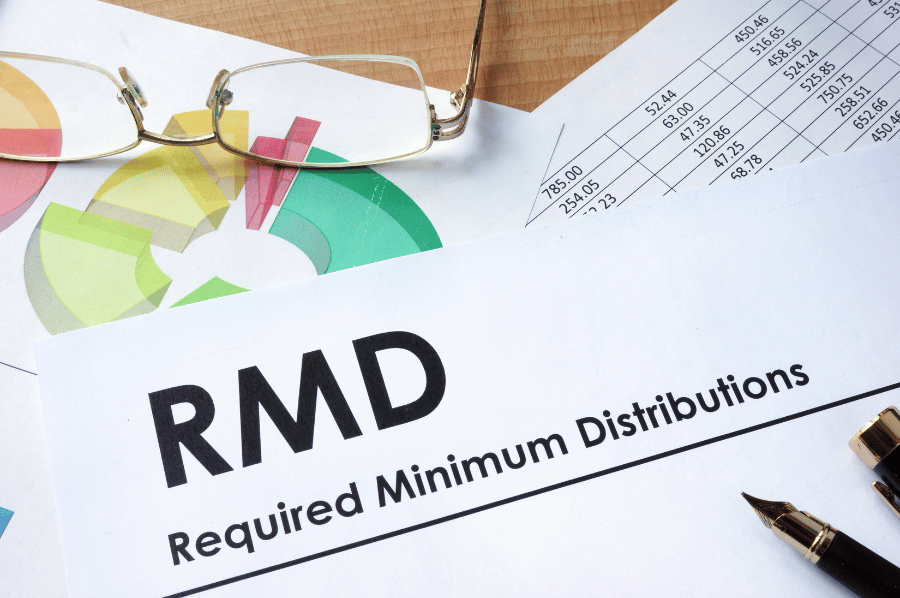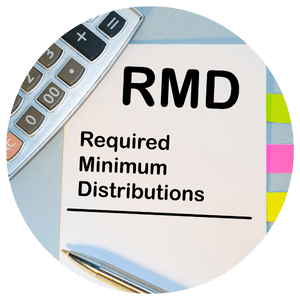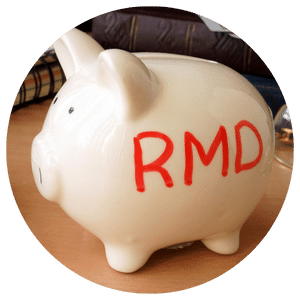


October 31, 2023
Planning for your retirement is an intricate journey, one that involves understanding various components that make up your financial landscape. Among these elements, Required Minimum Distributions (RMDs) hold a special place in retirement planning. RMDs are essentially the IRS's way of ensuring that individuals tap into their retirement savings in a controlled manner. In this post, we'll delve into the nitty-gritty details of RMDs, providing you with the knowledge needed to navigate this crucial aspect of your retirement strategy with confidence.
One of the most significant changes brought about by the SECURE Act 2.0, a landmark piece of retirement legislation, is the adjustment in the age at which required minimum distributions (RMDs) from retirement accounts must commence.
legislation, is the adjustment in the age at which required minimum distributions (RMDs) from retirement accounts must commence.
Previously, under the old rules, individuals with traditional Individual Retirement Accounts (IRAs) were obligated to initiate RMDs once they reached the age of 70 1/2. However, the SECURE Act 2.0 introduces a more flexible timeline for these mandatory withdrawals, aligning them with the evolving needs and longevity of retirees.
Now, RMDs will commence at age 72 for those born in 1950 or earlier, 73 for individuals born between 1951 and 1959, and 75 for those born in 1960 or later. This progressive shift in the age requirement empowers retirees with greater control over their financial planning, allowing them to consider delaying RMDs if it aligns with their retirement strategies, potentially reducing their tax liabilities and enabling more strategic wealth management. This modification serves as a testament to the government's recognition of the changing landscape of retirement, providing individuals with valuable options as they navigate their financial futures.
Understanding the intricacies of calculating Required Minimum Distributions (RMDs) is crucial to manage your retirement accounts effectively. RMDs aren't arbitrary; they follow a structured formula based on IRS guidelines, primarily outlined in Tables within Publication 590-B, titled "Distributions from Individual Retirement Arrangements (IRAs)."
The calculation process varies depending on your individual situation and beneficiary status. Here's how the amount of your RMD is determined:
Each year, the IRS updates these tables to reflect the most current life expectancy data and regulations, so it's essential to consult the applicable table for the year in question when calculating your RMD.
By applying the appropriate life expectancy factor to your prior December 31 account balance, you can determine the exact amount you are required to withdraw during the current year to satisfy your RMD obligation. This structured approach ensures that RMDs are tailored to your specific circumstances while adhering to IRS regulations, allowing you to manage your retirement accounts effectively and efficiently.
Understanding the repercussions of failing to meet your Required Minimum Distributions (RMDs) is crucial for responsible retirement account management. The consequences for non-compliance are financially significant and can impact your retirement savings. Here's what you need to know:
Excise Tax: If an account owner does not withdraw the full amount of their RMD by the applicable due date, they become subject to an excise tax. SECURE 2.0 Act dropped the excise tax rate for excess accumulations and is reduced to 25% for tax years beginning in 2023 and after. This reduction offers some relief to retirees who inadvertently miss their RMD withdrawals but are still subject to penalties.In some cases, the excise tax rate may be further reduced to 10% if the missed RMD is corrected within two years. This provision acknowledges that individuals may make genuine mistakes and provides them with an opportunity to rectify their oversight.
Reporting Requirements: To address the excise tax and its associated reporting, account owners should file Form 5329, titled "Additional Taxes on Qualified Plans (Including IRAs) and Other Tax-Favored Accounts," along with their federal tax return for the year in which the full RMD amount was required but not withdrawn. This form is essential for documenting and addressing the excise tax liability.Understanding these consequences underscores the importance of vigilant RMD compliance. While legislative changes like the SECURE 2.0 Act have introduced some flexibility and potential reductions in excise tax rates, the penalties for failing to meet RMD obligations remain significant. Therefore, it's essential to stay informed, take RMDs seriously, and ensure that you meet your obligations in a timely and accurate manner to preserve your retirement savings and avoid unnecessary tax liabilities.
 Delaying RMDs
Delaying RMDsIn certain situations, you may have the option to delay your RMDs. This provision is especially pertinent if you are still employed and actively participating in an employer-sponsored retirement plan, such as a 401(k). In such cases, RMDs from that specific plan can often be postponed until you retire. However, it's crucial to remember that this deferral applies only to the retirement plan associated with your current employer. RMDs from other retirement accounts, such as IRAs, must still commence at age 72(73 if you reach the age of 72 after December 31, 2022) .
While RMDs are a general rule for many retirement accounts, exceptions do exist. One prominent exception relates to Roth IRAs. Unlike traditional IRAs and other retirement accounts, Roth IRAs do not require RMDs during the account owner's lifetime. This feature can be especially appealing for individuals seeking to maximize the tax benefits of their retirement savings.
In the grand scheme of retirement planning, Required Minimum Distributions (RMDs) are a vital component that demands your attention and understanding. By grasping when RMDs start, how they are calculated, and potential exceptions, you can make informed decisions that will shape your financial security in retirement. Remember, taking proactive steps and seeking professional assistance can streamline the process and enhance your confidence in your retirement strategy.
Ready to talk about RMDs and your retirement planning? Contact our team today.
Sources Consulted: IRS.gov
Written By: Heritage Financial Planning Team

The SECURE Act 2.0, signed into law in December 2022, significantly changes retirement plans and tax code provisions. While keeping track of all the updates can be challenging, retirees need to...
Read More
If you're self-employed, then you already know that you're on your own when it comes to the benefits enjoyed by those employed by a company. Between getting a business off the ground and dealing with...
Read More
Receiving a lump sum distribution from a retirement account can be a game-changer in your financial journey. Whether you've just retired or left your job for other reasons, this presents a unique...
Read More
10440 N Central Expressway
Suite 1540
Dallas, TX 75231
214-446-2100
Site Links